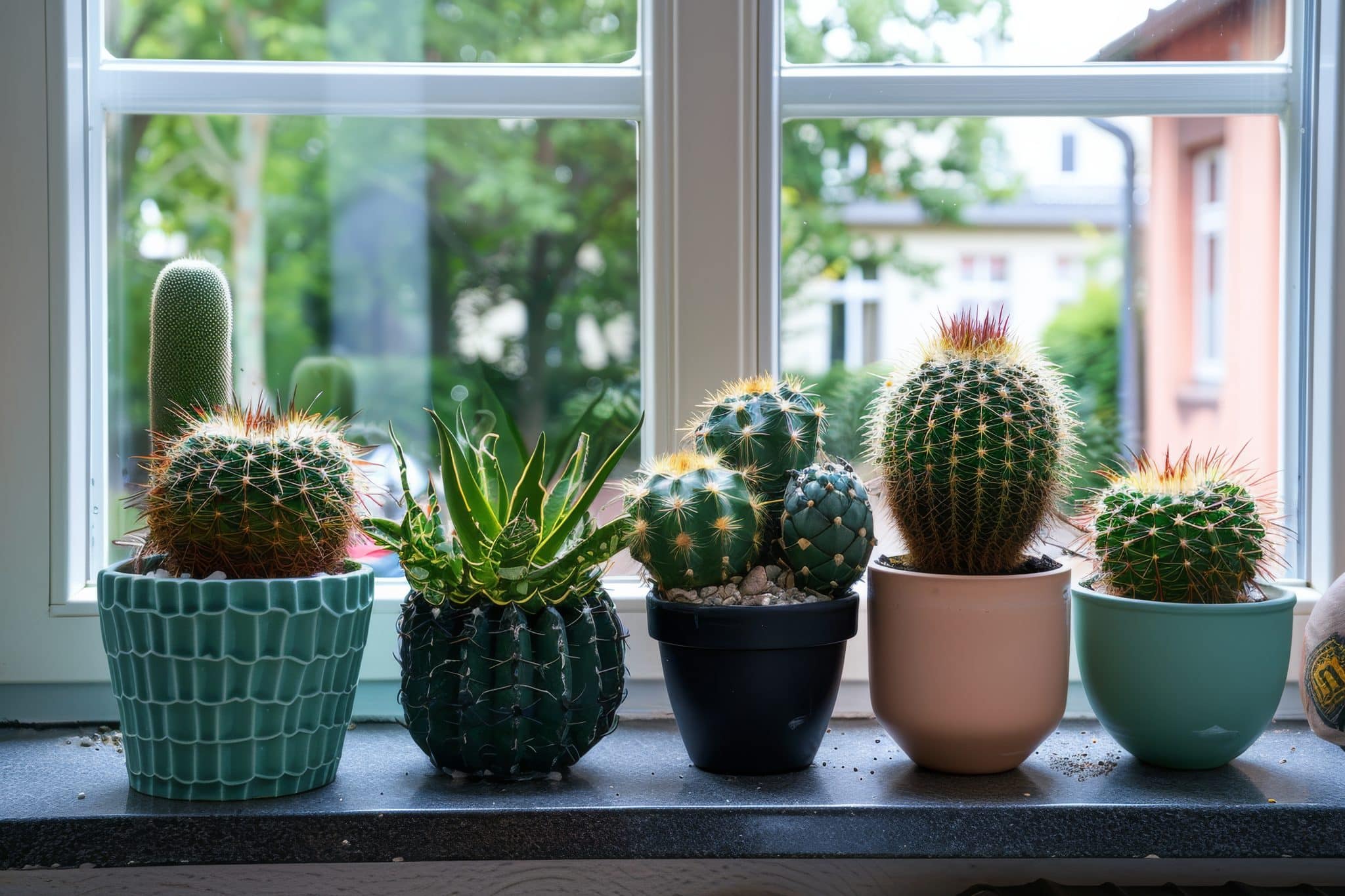How To Take Care Of Cactus Indoors: A Beginner’s Guide
Bringing a touch of desert charm into your home with indoor cacti can be an exciting and rewarding experience. These resilient plants are not only visually appealing but also relatively low maintenance, making them perfect for beginners and busy plant enthusiasts alike.
However, despite their hardy nature, cacti still require proper care to thrive indoors. But don’t get discouraged just yet. We’ll walk you through the essential steps to keep your indoor cacti healthy and thriving.
Choose The Right Cactus for Your Indoor Space
Before learning the care techniques, it’s essential to select the perfect cactus for your home environment. Not all cacti thrive indoors, so make sure to do some research first. Popular indoor varieties include the compact Golden Barrel Cactus, the colorful Moon Cactus, and the festive Christmas Cactus. For those with more space, the Peruvian apple cactus can be an impressive addition, as they can grow tall and produce large, night-blooming flowers.
When selecting your indoor cactus plants, consider factors such as size, growth rate, and light requirements. Smaller, slow-growing varieties are often ideal for indoor spaces, as they’re easier to manage and less likely to outgrow their environment.
The Mammillaria genus, for instance, offers a wide range of compact, attractive species that are well-suited to indoor cultivation. The Peruvian apple cactus, on the other hand, can grow quite tall and may require more vertical space and brighter light than some of its compact counterparts. By matching your choice to your available space and care capabilities, you’ll set yourself up for success in your indoor cactus growing journey.
Provide Adequate Light
Light is arguably the most critical factor in caring for indoor cacti. These desert dwellers are accustomed to bright, direct sunlight, which can be challenging to replicate indoors. So, place your cactus near a south-facing window where it can receive at least 4-6 hours of direct sunlight daily. If natural light is limited, consider supplementing it with grow lights to ensure your cactus gets enough light to thrive.
Water Your Indoor Cactus
One of the most common mistakes in cactus care is overwatering. Cacti are adapted to survive in arid conditions and can store water in their stems for extended periods. As a general rule, it’s better to underwater than overwater your cactus.
Water your plant thoroughly when the soil is completely dry, typically every 2-3 weeks during the growing season (spring and summer) and less frequently during the dormant period (fall and winter).
To check if your cactus needs water, stick your finger about an inch into the soil. If it feels dry, it’s time to water. Also, when watering, ensure that excess water can drain freely from the pot to prevent root rot. Never let your cactus sit in standing water.
Choose the Right Soil and Pot

Proper soil and drainage are essential for healthy indoor cacti. Use a well-draining cactus or succulent potting mix, or create your own by mixing regular potting soil with coarse sand and perlite. This ensures that water doesn’t collect around the roots, which can lead to rot.
Furthermore, select a pot with drainage holes to allow excess water to escape. Terracotta pots are an excellent choice as they are porous and help wick away moisture from the soil. Also, ensure that the pot is proportionate to the size of your cactus to allow room for growth but not so large that the soil stays wet for too long.
Consider The Temperature and Humidity
Most cacti thrive in warm temperatures between 70-80°F (21-27°C) during the day, with slightly cooler temperatures at night. While they can tolerate brief periods of colder weather, it’s crucial to protect them from frost. So, avoid placing your cactus near drafty windows or air conditioning vents to prevent sudden temperature fluctuations that can stress the plant.
Do note that the Christmas cactus is an exception to the typical high temperatures. Unlike its desert-dwelling relatives, this tropical plant can withstand cooler indoor temperatures during winter, making it a popular choice for holiday decor. In fact, exposure to cooler temperatures (around 50-55°F or 10-13°C) for several weeks can even encourage blooming.
While cacti are adapted to low-humidity environments, extremely dry indoor air can sometimes be an issue. If your home is particularly dry, you can increase humidity around your cactus by placing a tray of pebbles and water near the plant or using a small humidifier.
Fertilize Your Indoor Cactus
Contrary to popular belief, cacti do benefit from occasional fertilization, especially during their active growing season. Use a balanced, water-soluble fertilizer formulated for cacti and succulents, diluted to half strength. Then, apply the fertilizer once a month during spring and summer, and cease fertilization during the fall and winter months when the plant is dormant.
Repot Your Cactus
As your cactus grows, it may eventually outgrow its current cactus pot. Thus, you must familiarize yourself with the signs that it’s time to repot, including roots growing through the drainage holes, the plant becoming top-heavy, or soil drying out very quickly. The ideal time to repot your cactus is during spring season, when the plant is in its active growth phase.
Key Takeaway
Indoor cactus care can be a rewarding experience for plant enthusiasts of all levels. By providing the right conditions, including adequate light, proper watering, and well-draining soil, you can enjoy these unique desert plants in your home for years to come. Remember that each cactus species may have slightly different care requirements, so it’s always a good idea to research your specific variety.







